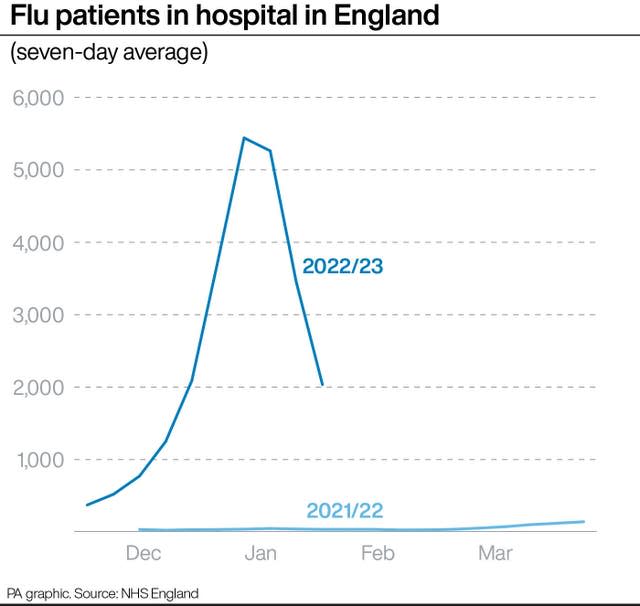Ambulance handover delays fall to lowest this winter despite ‘relentless’ pressure
Ambulance handover delays outside hospitals in England have dropped to their lowest level this winter, though one in five patients are still waiting at least half an hour to be transferred to A&E teams, figures show.
Delays in discharging medically-fit patients remain close to an all-time high, with health leaders warning of “relentless” pressure as the NHS prepares for its biggest staff walkout so far.
A total of 20% of ambulance patients in England waited at least 30 minutes last week to be handed to A&E teams, down from 23% the previous week and the lowest level this winter, according to NHS data.
The figure hit a record 44% in the week between Christmas and new year.

Some 7% of patients waited more than an hour last week to be handed to A&E teams – again, the lowest so far this winter and down week-on-week from 9%.
This figure reached 26% in the week ending January 1.
Hospitals have struggled in recent months to create space for new admissions, partly because of growing delays in discharging people who no longer need to be there.
An average of 13,566 beds last week were taken up by patients who were fit to leave, close to a record 14,069 in the week to January 8.
At this point last year the number stood at 12,819.
Some 41% of patients ready to leave hospital last week were actually discharged, though there were wide variations across the regions, with 49% discharged in eastern England and only 29% in north-west England.

Saffron Cordery, interim chief executive at NHS Providers, the membership organisation for NHS trusts in England, hailed the “remarkable progress” in reducing handover delays, but warned there is still “relentless” pressure on urgent and emergency care services.
“As trust leaders prepare for the biggest NHS staff walkout in less than two weeks, they are having to grapple with unsafe levels of bed occupancy, with 93.8% of general and acute ward beds taken up each day last week,” she said.
“Patients are staying longer in hospital than they were this time last year, often because their illnesses are more serious, while delayed discharge remains very high. This is partly due to the lack of investment in capacity in social care and community services.
“All of these stresses are impacting care right through the system, including ambulances, hospital A&Es, mental health and community services.”
Tens of thousands of nurses and ambulance workers in England and Wales will take industrial action on February 6 as part of an ongoing dispute over pay.
It is expected to be the biggest one-day strike in the history of the NHS.
Nurses will also strike on February 7, while ambulance staff are due to take further action on a series of dates later next month.

Some of the extra pressures faced by hospitals this winter have been due to a surge in winter viruses, though the latest data shows a continuing fall in flu and Covid-19 numbers.
An average of 2,034 flu patients were in hospital beds in England each day last week, down 63% from the week to January 1.
There were 5,632 patients with Covid-19 in hospital on January 18, a drop of 40% since the start of the year.
Professor Julian Redhead, NHS England national clinical director for urgent and emergency care, said: “These new figures show that while there have been improvements in ambulance handovers and fewer flu patients in hospital, the NHS remains under significant pressure – last week saw more people being taken to A&E by ambulance, bed occupancy is still constrained, and illnesses like flu and norovirus are still a very real concern.
“The NHS has done extensive preparation for this winter, including rolling out extra beds, a national falls services and nationwide 24/7 control centres to track and manage demand, and NHS staff are working flat-out to continue to provide the best care for our patients in the face of ongoing pressures.”
Norovirus cases in England have increased slightly, with an average of 371 adult beds occupied last week by patients with diarrhoea and vomiting or norovirus-like symptoms, up week on week from 344 and twice as many as this time last year.

 Yahoo News
Yahoo News 
